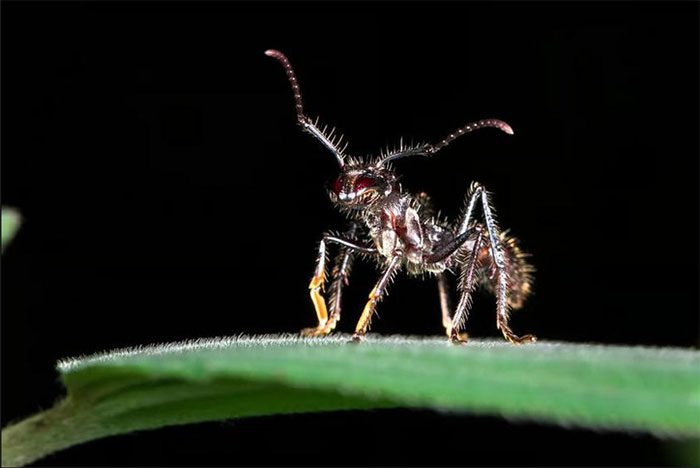Researchers have discovered that the ant known as the “most painful sting in the world” is due to its toxins directly targeting the pain nerves in humans.
Unlike the substances found in the venom of snakes and scorpions, the toxins from insects like ants affect the body in a previously unseen way.
Researchers from the University of Queensland studied the Aussie green ant and the bullet ant from South America, both of which deliver intense and lasting stings.

When an ant stings a human, its toxins go directly to the pain nerves – (Image: NEW ATLAS).
The Aussie green ant is found throughout Australia. They prefer to nest beneath most types of grass and are often unnoticed until someone is stung, resulting in a burning sensation.
Bullet ants inhabit the humid lowland rainforests of Central and South America. They are named for the pain humans experience when stung, which is akin to being shot.
A bullet ant can cause severe muscle spasms and a burning sensation. Dr. Justin Schmidt, a late American entomologist who created the insect sting pain index, rated the sting of the bullet ant as the most painful in the world.
Sam Robinson, the lead author of the study, stated: “The stings of the bullet ant can cause pain for up to 12 hours, and it is a deep, bone-crushing pain accompanied by sweating and goosebumps, completely unlike the 10-minute lingering effect of a typical bee sting.”
In the new study, scientists found that the venom specifically targets the sodium channels of nerve cells.
Robinson explained: “We have discovered that the venom from this ant targets the nerve cells that send our pain signals.
Typically, the sodium channels in these sensory nerve cells only open briefly in response to a stimulus. The ant’s venom binds to the sodium channels and makes them open more easily, remaining open and active, leading to prolonged pain signals.”
These neurotoxins targeting sodium channels are unique to ants, Robinson added.
This discovery helps researchers gain a better understanding of how pain works and how to treat it.


















































